Historic Walking Trail (3) – Part 2
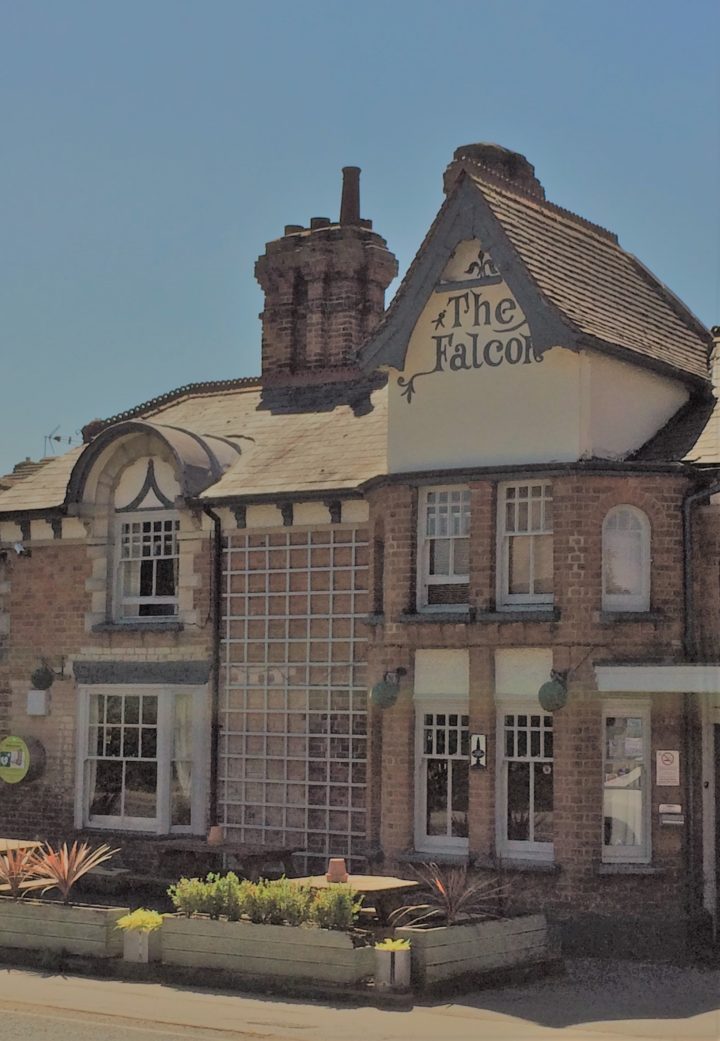
17 – All Saints Mission Church
Across the road, to the right of an alleyway, once stood All Saints’ Mission Church. This “tin tabernacle” provided for the traditional religious needs of this part of the town until it was taken down in the 1980s.
On your left is the Falcon Pub
18 – The Falcon Pub
The name of The Falcon derives from the crest of the Dormer family, landowners when the pub was first opened in 1861. When the railway came to Thame it was often referred to as the Falcon Railway Hotel. The original structure was replaced after a disastrous fire in 1900. The Falcon is now the last of the many pubs and beer houses that were once prominent in this area.
Look Across the Road
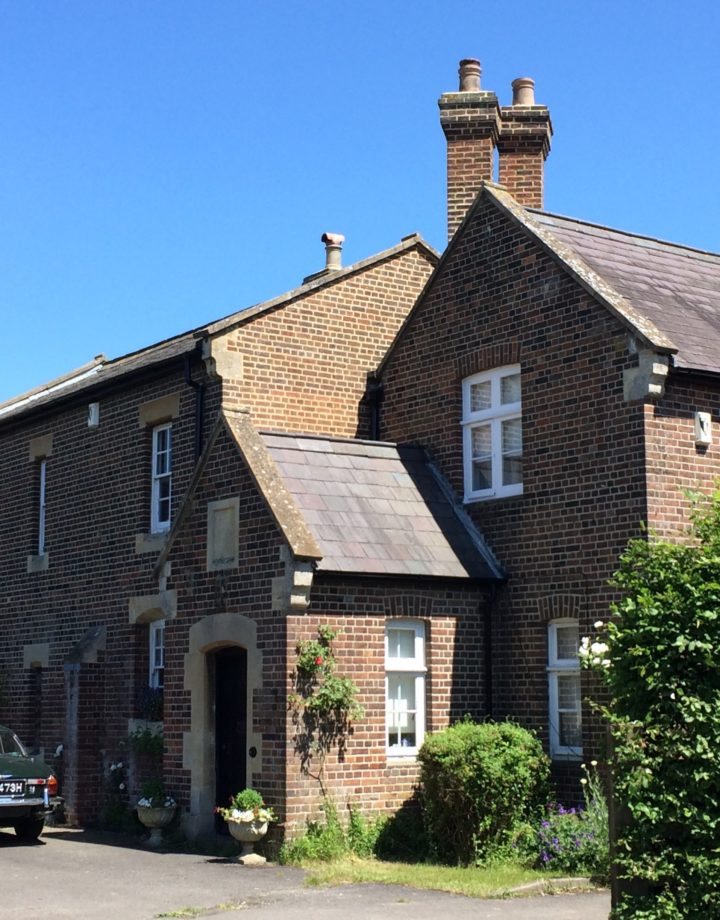
19 – The Old Police Station
The house opposite the Falcon was until the 1990s Thame Police Station which was built at the road junction facing Park Street in 1854. With its proximity to the railway station the adjoining area became a small industrial complex of garages and workshops in the early 20th C. There was also a cinema and ironworks a little way back along Chinnor Road.
Walk to the junction with Chinnor Road.
20 – The Wenman Arms
The gap in the houses on the left leads to the secluded Park Terrace; the house at the entrance was until 1957 the Wenman Arms, a popular pub in its day.
Look across the road
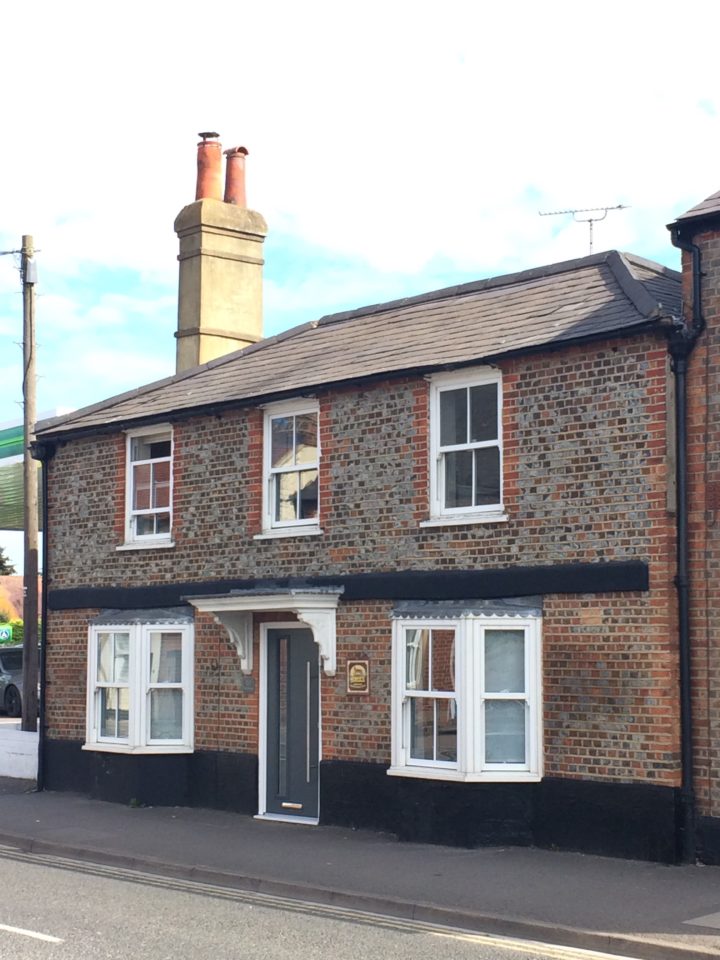
21 – The Four Horse Shoes
The house next to the garage is the former Four Horse Shoes pub. This was originally a farm house which, as its name implies, became a staging post between the town and Thame Abbey. Despite its appearance it is the oldest building in the area. The predominant building material of this part of town is clearly brick and in early 19th C much of it came from the brickworks that stood in the area around the garage. Park Street was known at the time as Brick Kiln Lane.
Stop 22 – Seymour’s Motorcycle Shop
Opposite the garage, where Seymour Court now stands, Seymour’s Motorcycle Shop used to be housed in a former fire station. On the other side of the road are many attractive houses from Victorian and Edwardian times.
Continue along Park Street to The Royal British School.
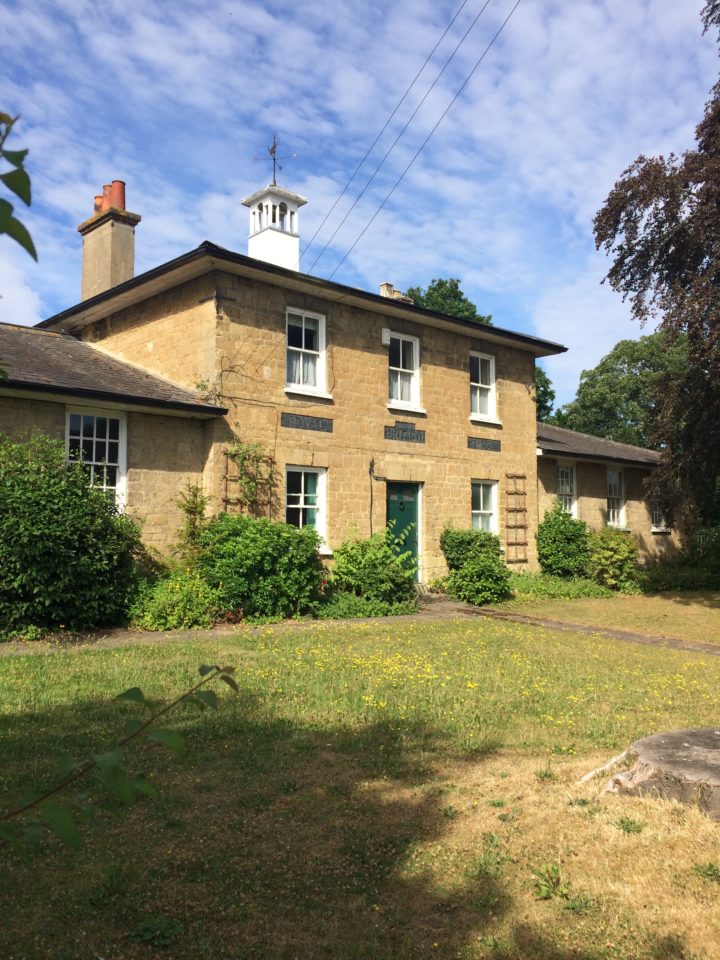
23 – John Hampden Primary School
When built in 1836 the ground cost £400 and the building around £1,500, the money being raised mainly by donations. The “Royal” attachment to this “British School” was on the basis of a donation of £5 from the Duchess of Kent (Queen Victoria’s mother). It is now the John Hampden Primary School, named after a local hero of the Civil War.
A little further on, turn left into Elms Park
24 – Elms Park
Elms Park was given to the town in 1951 by Mr and Mrs Leonard Purser who then lived at The Elms, to be maintained as a park and recreation ground for the town
Pass through Elms Park, turn right along a path with housing to the left, a line of old trees and a fence on the right.
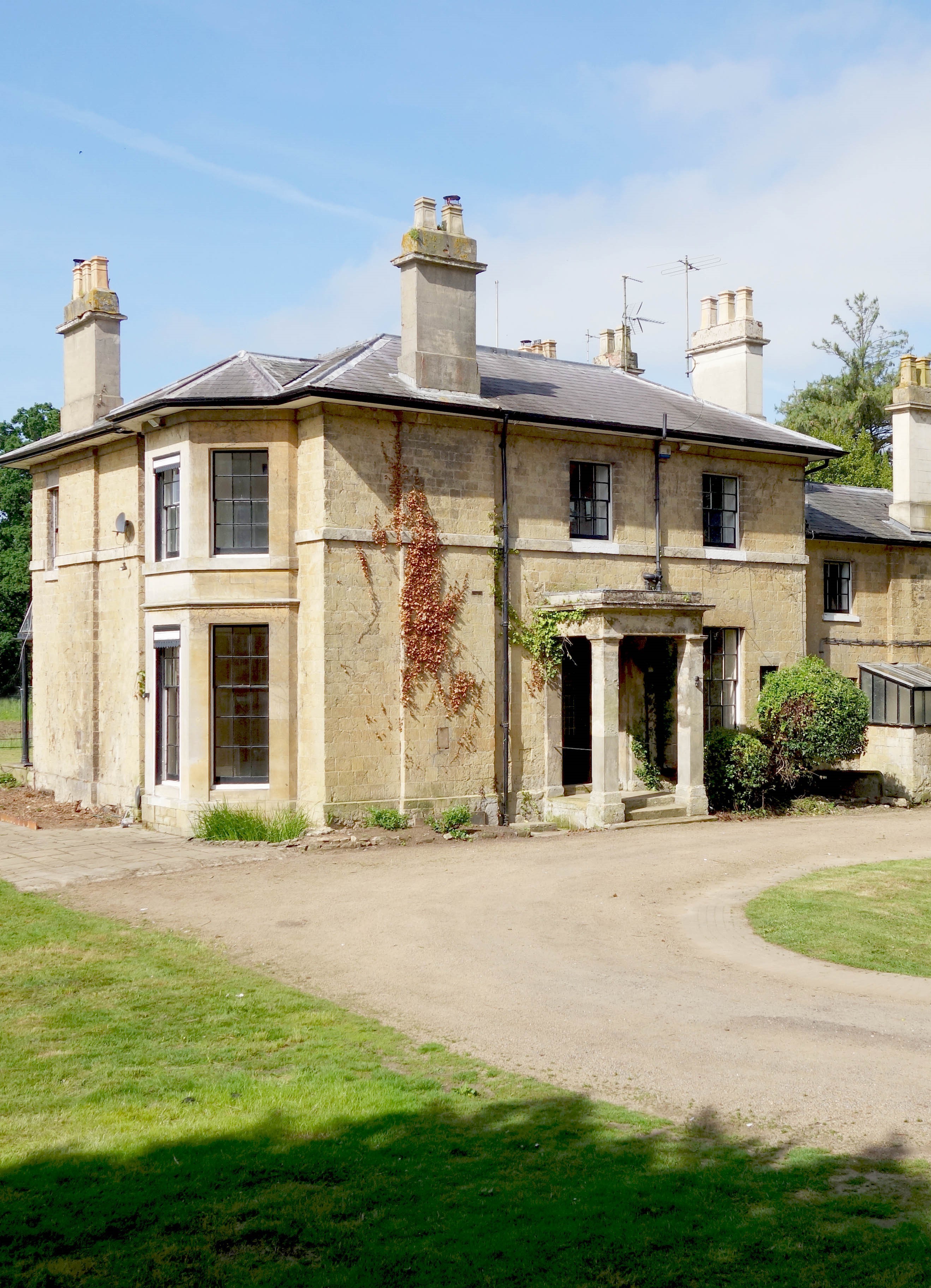
25 – The Elms
The path leads to Elms Road where over the wall are the extensive grounds of The Elms. The house was built as a private residence for Thomas Stone, a prominent draper, in the 1830s and then known as May’s Elms. There are interesting brick decorative features in the wall pillars.
Turn right into Nelson Street
26 – Nelson Street
Nelson Street which was broken through to the Upper High Street soon after 1900 to give better access to the south of the town and thus provided an opportunity for the building of the many Edwardian houses that line the street.
Walk up Nelson Street. Near the top of the street is The Players Theatre.
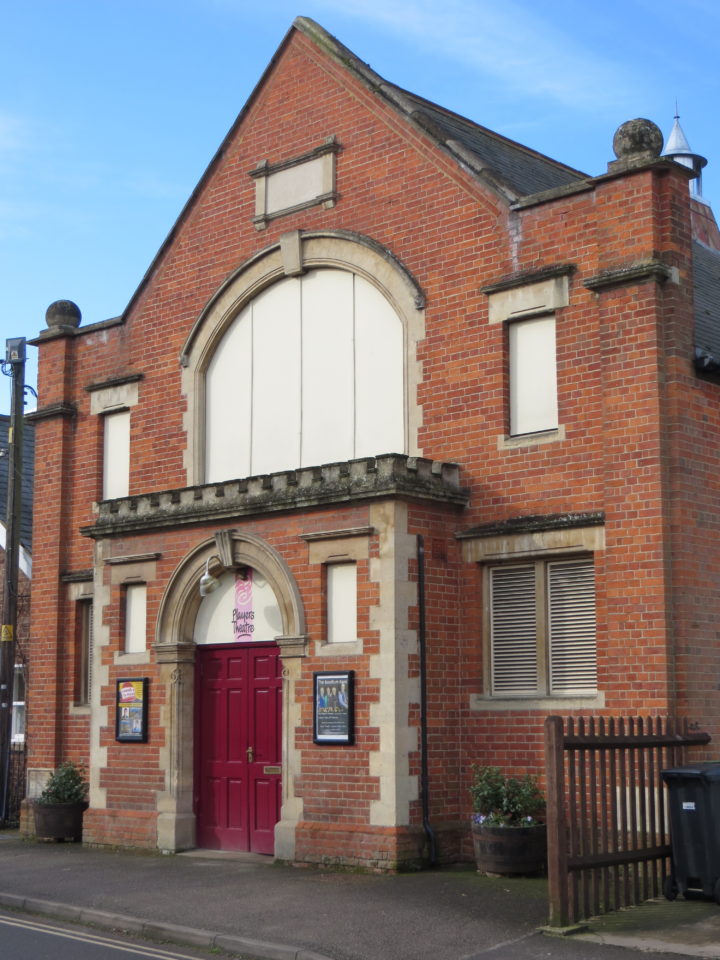
27 – The Players Theatre
On your right The Players Theatre is located in the former St Mary’s Church Hall which was founded in 1913, although not completed until 1928. The building was purchased by the Thame Players in 1997 and re-opened after a complete refurbishment in 2002. It now provides a fine venue for resident and touring players as well as regular film shows.
Carry on walking. Just beyond The Players is the Fire Station.
28 – Fire Station
Although built in 1937 the Fire Station still houses the two appliances of the local brigade and has a tall training tower to the rear. Take care crossing the forecourt and watch out for the Fire Engines as they emerge.
Turn right at the end of Nelson Street and pass Christchurch on your right.
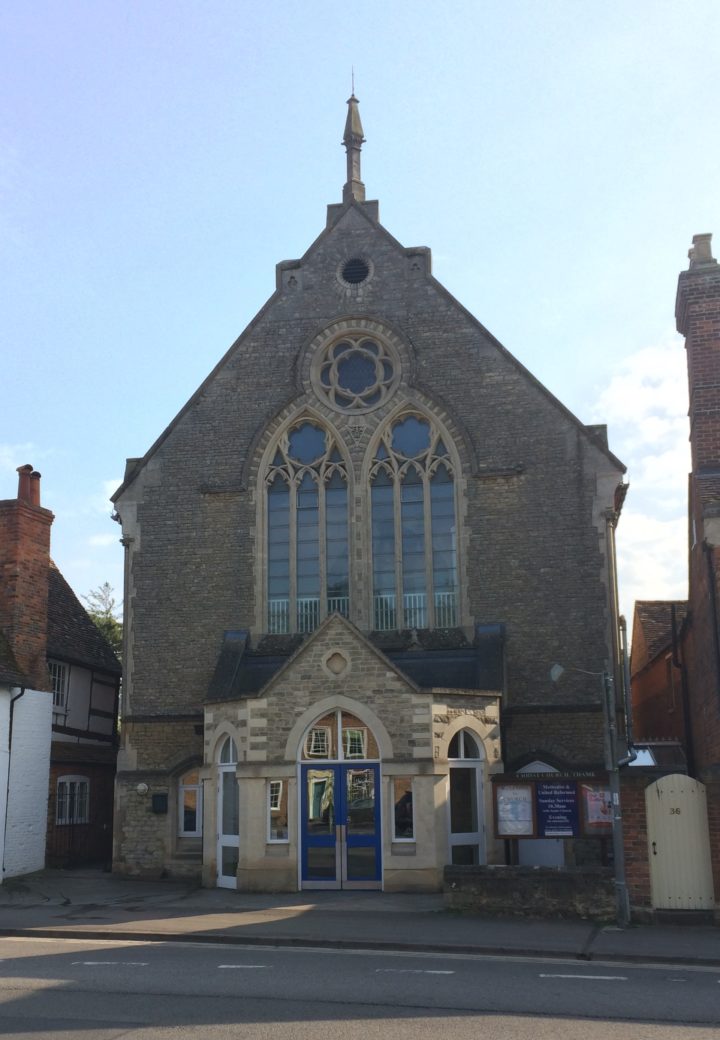
29 – Christchurch
Christchurch was built of brick fronted with stone in 1871 as the Congregationalist Chapel and is the sole 19th C chapel in the town still in use for its intended purpose
Keep walking and on your right not long after Christchurch is No 34.
30 – No 34
The timber framed building at No 34 is where a magnificent set of Elizabethan wall paintings were discovered in the room above the porch in 1968. These are now on display at Thame Museum. The building was also the cycle shop and garage from where James G West sold the first Renault cars imported into this country in about 1905
Continue walking back towards Memorial Gardens
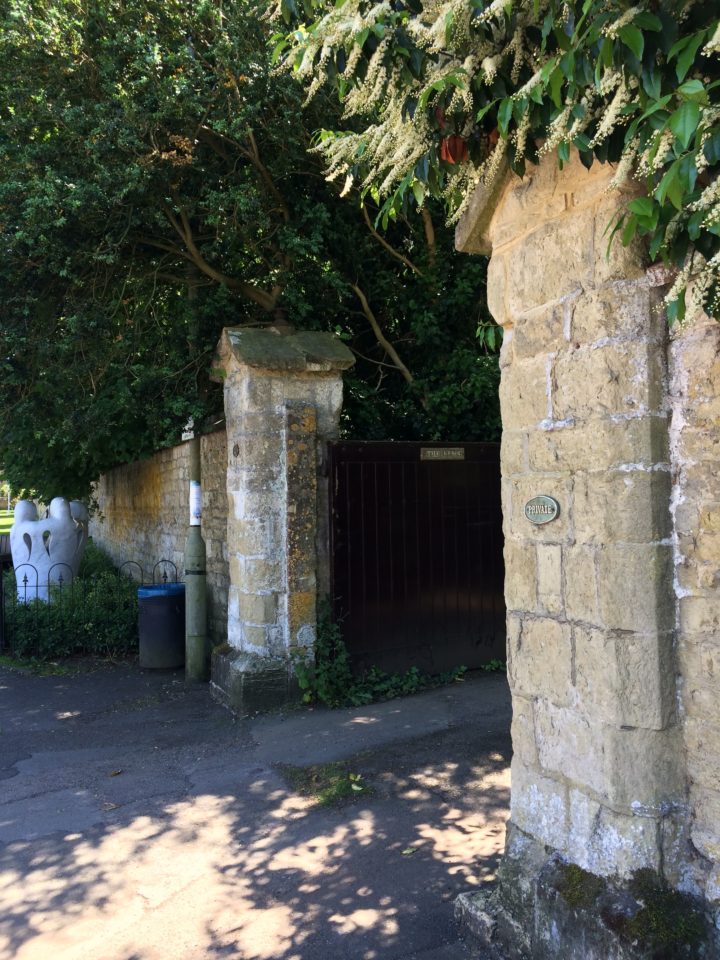
31 – Entrance to The Elms
Before returning to the Memorial Garden pass the entrance to the substantial private house of The Elms, the extensive grounds of which were previously mentioned at Point 26.
